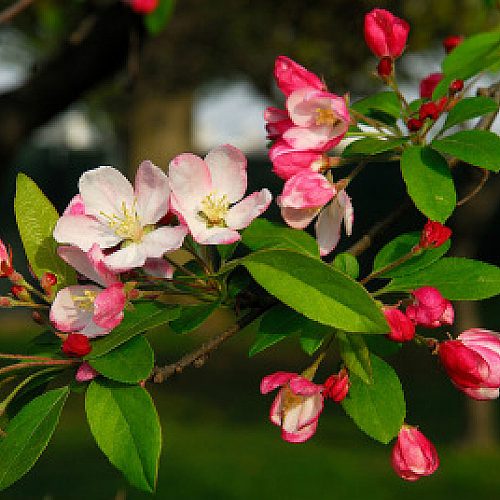
Collection
Ornamental Trees & Shrubs
Lilacs
Landis preserves a historic lilac collection and maintains appropriate records for future generations to utilize. Fred Lape had a special interest in lilacs. Father John Fiala in his book, Lilacs, the Genus Syringa, said the following, “Fred Lape was an author, linguist, horticulturist and a lilac enthusiast. His (book), A Garden of Trees and Shrubs, is a must for estate planners who are beginners. He was the originator of the S. vulgaris seedlings from ‘Kapriz’ and ‘Cheat’ seed obtained from Russia and the originator of the beautiful late blooming white lilac ‘Summer White” for which he received an Award of Merit. He received a commendation for his translation of the Russian lilac publications into English.
The existing historic collection has been declining due to Lilac Witches Broom (LWB), a disease of lilacs caused by the Phytoplasma Candidatus Phytoplasma fraxini. This phytoplasma was first identified as the causal agent of Ash Yellows and has since been attributed to both diseases.. Thanks to a generous donation from a long-time Landis volunteer and donor, a new location free of the disease has been established and the collection is being restored. Although not all the original lilacs are available now, every attempt is being made to include all the varieties that were part of the original collection.
Rhododendrons
The Arboretum’s collection is made up of cold hardy members of the genus that will survive and grow in the northeast United States.
The collection site also acts as a trial area for newly developed plants that have potential for use in northern landscapes. Rhododendrons are wonderful for color in spring, providing a delight for the eye.
Crab Apples
Crab apples provide spectacular spring blooming and autumn fruiting displays, however, diseases and pests have been very destructive to the genus Malus. As the result of intensive breeding programs most of the newer varieties are resistant to diseases and pests.
Visitors can see the older and more recently developed varieties side by side in the Arboretum’s collection.



